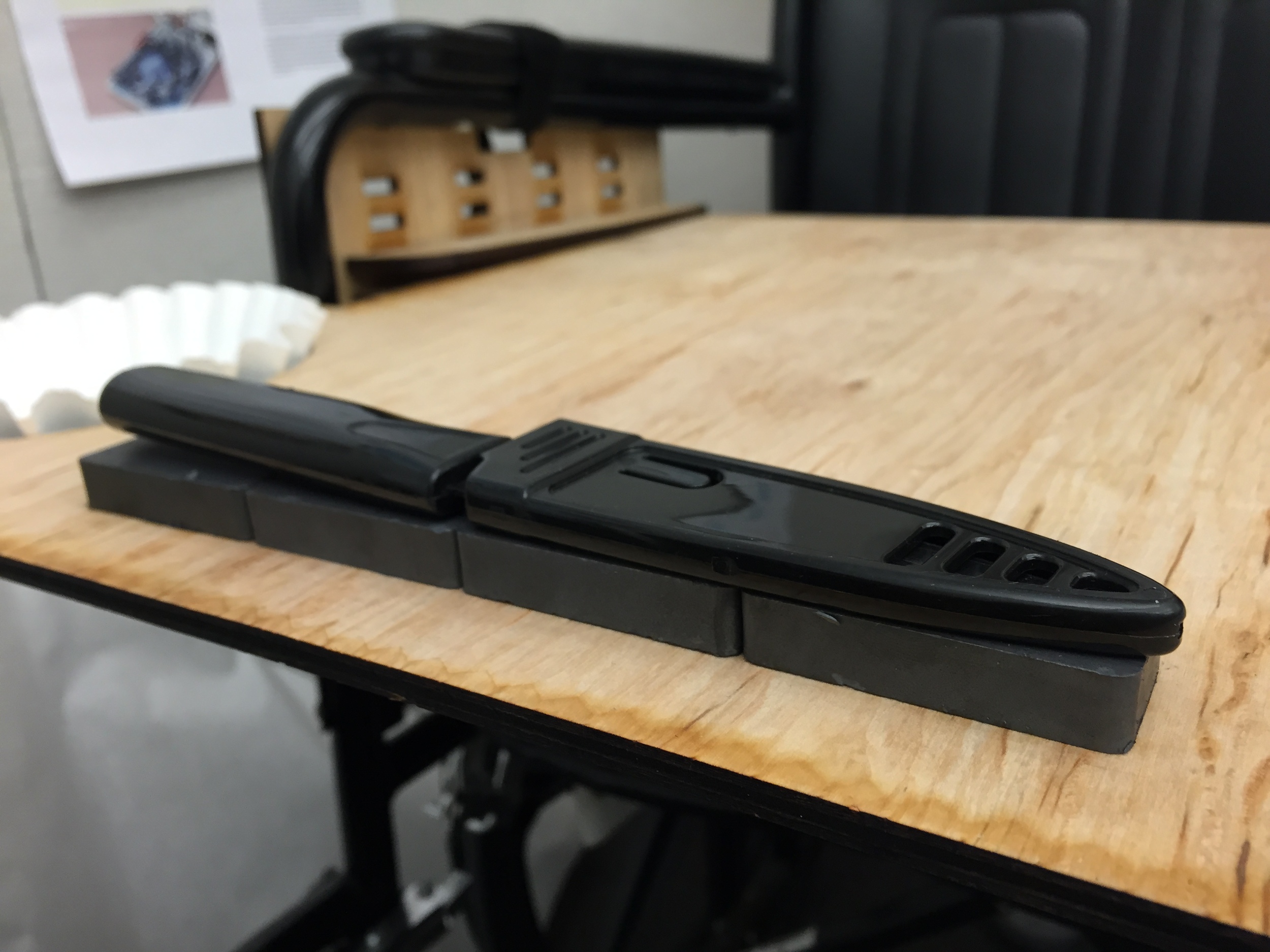Chefboard: a cutting board for people in wheelchairs
TEAM MEMBERS
Nanako Era
Natalie Salaets
Israel Gonzales
MY ROLE
Research
Design
Physical Prototyping
Fabrication: Laser Cutting
DURATION
2 weeks
We were given the task of creating a tool for people with disabilities using fabrication techniques. We decided to tackle concentrate on people in wheelchairs. Wheelchair users face many obstacles when cooking in the kitchen, from restricted space to move around to countertops and stovetops that are too high. Currently, people in wheelchairs often place their cutting boards on top of their laps. As they move around the kitchen, this can be unstable and dangerous.
As such, we designed a cutting board for wheelchair users to make their cooking process easier and safer.
PROCESS
RESEARCH
We conducted research on existing cutting boards made for people with disabilities as well as the cooking process for people in wheelchairs. We also interviewed people from the Human Engineering Research Laboratories who specialized in developing wheelchairs.
Some of the insights from our research are as followed:
- Use a rigid, manual wheelchair
- Keep it lightweight
- Don’t use permanently attached devices (adds too much weight)
- Should be easily stored
Through our interviews, we also learned the desires of wheelchair users:
“...a way to store a knife safely–maybe a magnet? A slot to slide a knife into the board, but with a safety to avoid stabbing ourselves.”
"In a perfect world, there would be an easy way to affix [the cutting board] to the chair or our bodies for use while cooking, but make it easy to take off... And clean.”
“Anything attached to the wheelchair should be lightweight and temporary. Even just a pound feels heavy.”
PROTOTYPING
We created multiple prototypes before converging to our final design.
From our cardboard designs, we made several changes: we expanded the top half to add more workspace, made the board wider to rest on the rails, and iterated on the rails so that it would catch the board if it gets too top heavy.
We then created our first wooden prototype.
While testing out our prototype, I found that the edges were too sharp, so I iterated our design and made the edges for the board and the rails rounded. I also added two holes at the top of the board so that users can place bowls in them to store their uncut and cut vegetables. Additionally, the rails are also wider to better hold the board in place. To accommodate people of different sizes, we have multiple levels on the sideboard to allow people to adjust the rails to their preferred height. We also added a magnetic strip at the top to hold knives.
Overall, our board is lightweight and easy to store. The rails themselves can be easily strapped on by velcro, and the rails are unobtrusive, so the user can leave them on the wheelchair if she does not want to take them on and off each time she cooks. We were able to take our findings from research and apply them in our final design.
FUTURE WORK
To take this project further we could experiment with different types of heat-resistant materials that are also dishwasher-safe. We would also like to implement and test out a gutter for catching juices, rubbery grip along the edges and handles, and raised lips along edges of board to prevent food from falling out.





